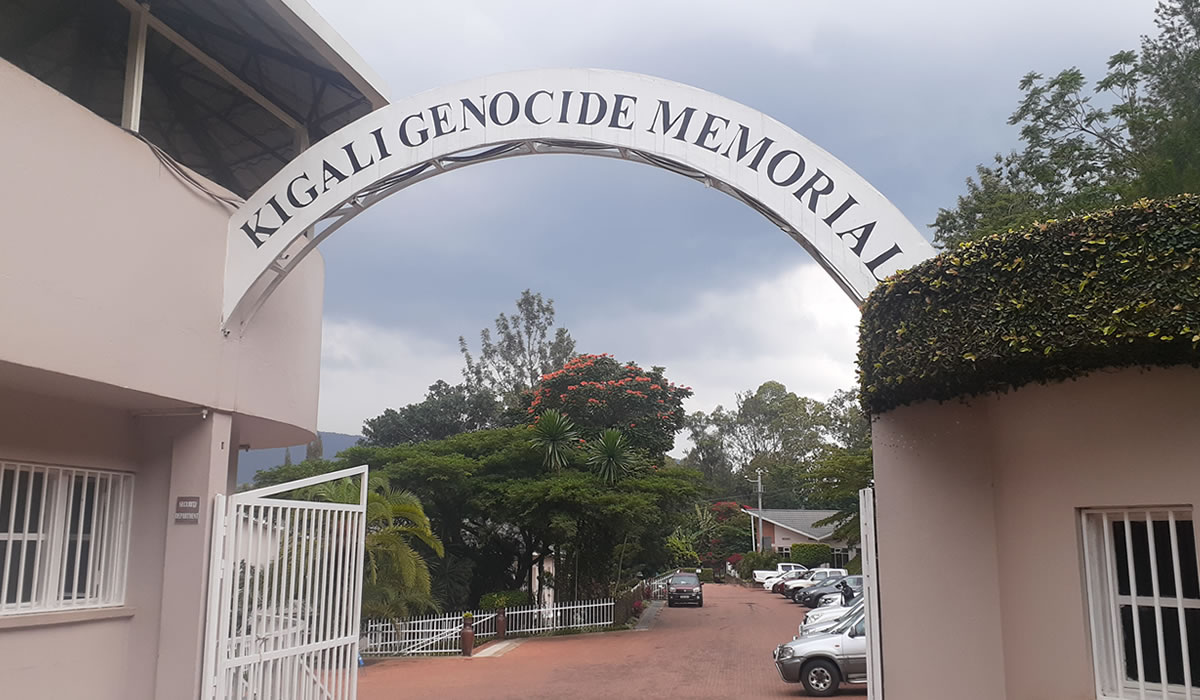Gorilla trekking in Rwanda is one of the most extraordinary wildlife experiences on Earth. Nestled…

Kigali Genocide Memorial
The Kigali Genocide Memorial stands as one of the most powerful and solemn landmarks in Rwanda, offering a deeply moving tribute to the victims of the 1994 Genocide against the Tutsi. Located in Gisozi, just outside the heart of Kigali, this memorial site is not only a final resting place for over 250,000 victims but also a center for education, reflection, and reconciliation. For visitors seeking to understand Rwanda’s past and its remarkable journey toward healing, the Kigali Genocide Memorial is an essential destination.
Established in 2004 by the Aegis Trust in partnership with the Rwandan government, the Kigali Genocide Memorial was created to honor the memory of those who perished during the genocide and to educate future generations about the dangers of hatred and division. The genocide, which lasted approximately 100 days from April to July 1994, claimed the lives of an estimated 800,000 people mostly Tutsis and moderate Hutus. The memorial serves as a stark reminder of the consequences of unchecked hate and the importance of building a peaceful and inclusive society.
The memorial grounds are divided into several sections, each designed to guide visitors through the history, impact, and aftermath of the genocide. The most prominent feature is the burial site, where the remains of hundreds of thousands of victims are interred in mass graves. These graves are marked with simple concrete slabs, symbolizing the collective loss and the dignity of those who were denied proper burials during the chaos of 1994. Visitors often leave flowers or personal notes, creating a poignant atmosphere of remembrance and respect.
Inside the memorial center, a series of exhibitions provide a comprehensive narrative of the genocide. The displays include photographs, personal testimonies, video footage, and artifacts such as clothing, identity cards, and personal belongings recovered from victims. These exhibits are presented in three languages; English, French, and Kinyarwanda to ensure accessibility for both local and international visitors. The museum’s layout is chronological, beginning with Rwanda’s pre-colonial history, moving through the colonial era and the political tensions that led to the genocide, and culminating in the events of 1994 and the country’s efforts toward recovery.
One of the most emotionally charged sections of the memorial is the Children’s Room, which pays tribute to the youngest victims of the genocide. Photographs of children, accompanied by brief descriptions of their personalities, favorite activities, and the manner in which they were killed, line the walls. This space is particularly heart-wrenching, reminding visitors of the indiscriminate brutality of the genocide and the innocence lost.
Beyond remembrance, the Kigali Genocide Memorial is also a hub for peace education and community engagement. The Aegis Trust, which manages the site, runs a variety of programs aimed at promoting reconciliation, critical thinking, and non-violence. These initiatives include workshops for students, training for teachers, and outreach to communities across Rwanda. The memorial’s Peace and Values Education program has reached thousands of Rwandans, helping to foster a culture of empathy and mutual respect.
The memorial also plays a significant role in international peacebuilding efforts. It hosts delegations from around the world, including policymakers, educators, and human rights advocates, who come to learn from Rwanda’s experience and apply its lessons to their own contexts. The site has welcomed notable figures such as Ban Ki-moon, King Charles III, and other global leaders, all of whom have praised Rwanda’s resilience and commitment to reconciliation.
April is a particularly significant month at the Kigali Genocide Memorial, as it marks the beginning of Rwanda’s annual commemoration period. Known as Kwibuka, which means “to remember” in Kinyarwanda, this period includes memorial services, survivor testimonies, and educational events. The memorial becomes a focal point for national mourning, drawing thousands of visitors who come to pay their respects and reflect on the country’s history. For travelers planning a visit during this time, it’s important to approach the experience with sensitivity and respect for the emotional weight of the occasion.
In addition to its physical exhibitions, the Kigali Genocide Memorial offers virtual tours and online resources, making its message accessible to a global audience. The Genocide Archive of Rwanda, housed within the memorial, is a digital repository of documents, photographs, and testimonies related to the genocide. This archive serves as a valuable tool for researchers, educators, and anyone seeking to understand the complexities of Rwanda’s past.
Visiting the Kigali Genocide Memorial is a deeply personal experience. Many survivors describe the site as a place of healing, where they can connect with lost loved ones and find solace in the collective memory of their community. For international visitors, the memorial offers a sobering perspective on the consequences of prejudice and the importance of standing against injustice. It challenges all who enter to reflect on their own values and the role they play in promoting peace.
The memorial is open to the public year-round, with guided tours available for individuals and groups. Admission is free, though donations are encouraged to support the memorial’s educational and outreach programs. Visitors are advised to allocate at least two to three hours to fully engage with the exhibits and the grounds. Photography is permitted in most areas, but discretion is advised, especially in sensitive sections like the burial site and the Children’s Room.
To make the most of your visit, consider starting with the introductory video presentation, which provides context for the exhibits and sets the tone for the experience. From there, move through the chronological displays, taking time to read the personal stories and reflect on the images. The memorial gardens offer a peaceful space for contemplation, with benches and shaded areas where visitors can sit and process their emotions.
For those interested in supporting the memorial’s mission, there are several ways to get involved. The Aegis Trust offers volunteer opportunities, educational partnerships, and donation programs that contribute to peacebuilding efforts in Rwanda and beyond. By engaging with the memorial’s work, visitors can help ensure that the lessons of the genocide continue to inform and inspire future generations.
In conclusion, the Kigali Genocide Memorial is more than a museum, it is a living testament to Rwanda’s journey from tragedy to hope. It honors the memory of those who were lost, educates visitors about the dangers of hatred, and inspires a commitment to peace and reconciliation. Whether you are a survivor, a student, a tourist, or a global leader, a visit to the Kigali Genocide Memorial is a transformative experience that leaves a lasting impression. As Rwanda continues to build a future rooted in unity and resilience, the memorial stands as a beacon of remembrance and a call to action for all humanity.




